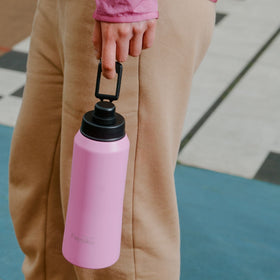
Postpartum Pelvic Floor Exercises for New Mums
Weakness of the pelvic floor muscle can occur during pregnancy as well as post delivery, therefore it is important to strengthen the muscle both whilst pregnant and after delivery (both vaginal delivery and c-sections). Pregnancy puts a strain on a woman's body in lots of different ways. Carrying a child can put a strain on the pelvic floor muscles causing them to weaken. Vaginal delivery can also cause trauma to the muscle especially if interventions such as forceps are used. If you fail to strengthen the pelvic floor you increase the risk of developing problems like prolapses and incontinence. Our age and hormonal changes can also have an impact on the health of the pelvic floor too. It is important to remember that when training the pelvic floor muscle you need to consider that you have two types of muscle fibres. We have fast twitch muscle fibres that activate when we cough, laugh and sneeze, and slow twitch muscle fibres that activate when we are desperate for the toilet! Training them takes two different methods.
Where to start with pelvic floor exercises
The first place to start is to work out where your pelvic floor muscle is and how it feels to contract it. If you really have no idea at all, try stopping your flow of urine next time you are at the toilet, that is your pelvic floor muscle! I would never suggest you practice your exercises this way but it is a good way to help you identify the muscle. I would then advise you to start building strength in the slow twitch fibres. Using feedback is a good way to build awareness of the pelvic floor and tactile sensation allows for a better technique. Sit on a chair or gym ball, tilt your pelvis forwards slightly so you can feel the pressure on the front genital area, now imagine there is a jellybean (or other small sweet!) underneath you, try to use your pelvic floor muscle to lift the jellybean up inside you, try and hold for 10 seconds, repeat 10 times. Initially you might only be able to hold for a few seconds but build up over time. Once you have mastered this try and imagine lifting and lowering the jellybean to different heights (almost as though your pelvic floor is a lift with perhaps three floors, take it up to the top level then drop it down to level two and so on) this builds great control of the muscle as well as strength.

Another exercise for your pelvic floor
My other top exercise it to lay on your back with your knees bent and a ball between your knees, ensure your lower back is slightly lifted from the floor to set your spine into neutral. Squeeze the ball between your thighs and engage the pelvic floor muscle. At the same time flatten your back down to the ground, you want to have a sensation of tightening around the pubic bone with this exercise. By squeezing the ball you activate your adductor muscles (inner thigh) which when activated will help you engage deeper with the pelvic floor. You can progress this when you're able to hold 10 seconds 10 reps to lifting your bottom up into a bridge position. This is a better exercise to perform post-partum. I wouldn't recommend this during pregnancy.

Building strength in the fast twitch fibres requires you to quickly contract and relax the pelvic floor, 10 fast contractions three times a day is easy to fit in! Many women after having children find it impossible to jump or star jump without leaking. Once your strength has improved post partum with the above exercises try then building functional strength by performing pelvic floor exercises whilst jumping! Unfortunately pelvic floor strength doesn't just happen. It takes effort to build strength and tone back into the muscle, as it does with any muscle. Persevere and your efforts will pay off!
About our guest author: Lyndsay Hirst is a chartered physiotherapist and a clinical Pilates instructor with over 15 years experience at working in the musculoskeletal field. She runs a hugely successful physiotherapy practice in the UK as well as a website with online clinical Pilates classes.
Image credits: Lyndsay Hirst










